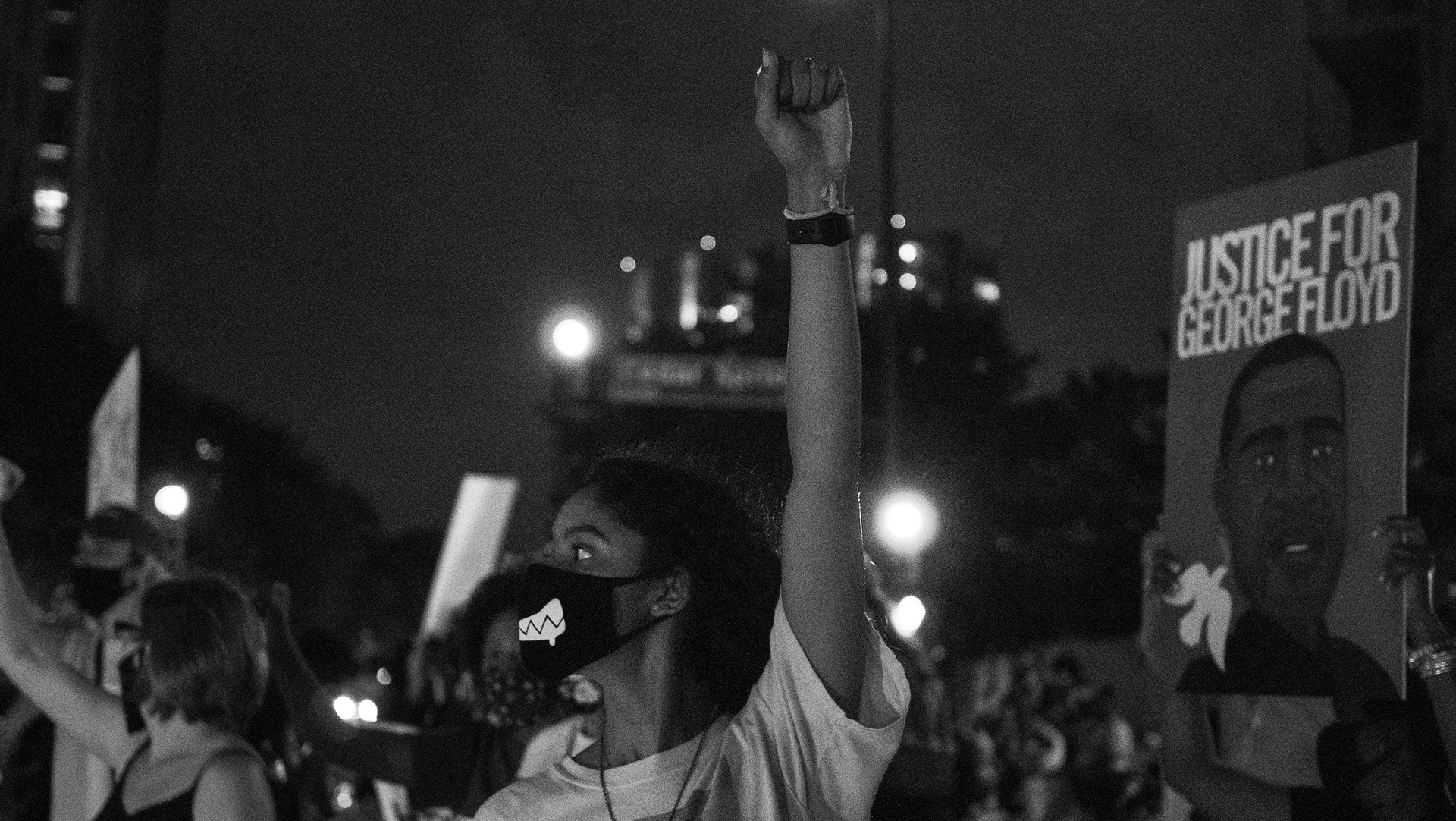I WENT BACK and forth about whether I should write this article at all. What should I say? How much should I reveal about my own journey? What will people think? How will this affect my family and my career? But the fact that I even have to ask these questions is why I felt compelled to write this article in the first place. I am DONE with the stigma and shame we can feel for seeking out help for restoring and maintaining our mental health.
Despite the isolation that one experiences when suffering from mental health issues, almost 1 in 5 adults in the United States experience mental illness each year (SAMHSA, 2019). However, less than 50% of the American adults experiencing a major depressive episode sought any treatment (SAMHSA, 2019). A systematic review study found that internalized stigma — holding stigmatized views about yourself — and the stigma associated with seeking mental health treatment may prevent people from seeking mental health care (Clement et al., 2015). The study found that stigma is more likely to negatively impact the help-seeking behaviors of ethnic minorities, such as Asian Americans, Arab Americans, and African Americans (Clement et al., 2015). Young people, men, as well as those in the military and health professions were also found to be disproportionately impacted by stigma in seeking mental health care (Clement et al., 2015).
I first realized I was struggling during my junior year of college. I was dealing with health issues, a huge shift in my career trajectory, and stress from a leadership position on top of my demanding school workload. I was crossing the street and remember having a fleeting thought: “if a bus hit me, that would be okay.” I knew right away that was not normal and I set up an appointment with my campus’s student counseling center. Luckily, appointments were free for students.
My therapist was an African American woman. She was very easy to talk to and affirmed my feelings while giving me strategies to cope more effectively. One of the things we worked on was how much I was affected by people’s perceptions of me — or my perceptions of their perceptions — as a hijabi woman on campus. She encouraged me to remember how awesome I was and to not hold back on being myself because of my assumptions about what others thought of me. She offered suggestions on how to approach challenges I was facing while managing my peers on the planning board I was chairing. I admitted to not feeling like I had control of my life due to the expectations of others. She helped me find ways to regain it, teaching me the mantra: “You control the plan, don’t let the plan control you.”
Since that time, I have sought therapy while going through my Master’s program, after experiencing a job loss, while suffering from workplace burnout, and most recently, when navigating the depths and challenges of perinatal depression.
“what i found most challenging was accepting that i needed to go to therapy at all.”
Throughout my experiences, my enthusiasm for and belief in the effectiveness of therapy has waxed and waned. There were certainly times when I was simply going through the motions, either not having confidence in my therapist or thinking I was too far gone for anyone to help. On the other hand, at its most effective, I credit therapy — with the right therapist — for saving my life or at least helping me craft one that I feel is worthwhile. I am relatively open about having gone to therapy and I am often a sounding board for people who are considering going themselves. I find that most everyone who considers it talks themselves out of it. This is reflected in a study that shows that major barriers to treatment by people in need of help include that they don’t think they need it or think they can handle their problem on their own (Mojtabai et al., 2011). There are real and serious access as well as financial barriers to seeking mental health care. Even for those with health insurance, it can be challenging to find a provider who is a good cultural fit, has the expertise you are looking for, accepts your specific insurance, is located close to you, and is accepting new clients. Luckily with the rise of telehealth services, several of these barriers are being eliminated. However, one barrier persists, especially in minority communities — our own shame & stigma. This can manifest in people saying they are “too busy,” “don’t need it right now,” or that they’ll “do it later.” The study went on to indicate that barriers related to peoples’ own attitudes were more important — cited by over 97% of respondents from the U.S. general population — than structural barriers — only 22.2% — in starting to access mental health care (Mojtabai et al., 2011). I do not believe that people would have such a laissez-faire attitude towards addressing the flu or a broken bone.
When you do decide to start on the journey towards mental healing, recognize the fact that your first, second, or even third therapist may not be a good fit. Don’t be afraid to listen to your gut when you work with someone. You also need to go into therapy with an agenda. Figure out what issues you want to focus on in each session and what problems you want to solve. Finally, note the action items after each session. Write down your takeaways and what you should work on before your next appointment. Also, know that although it is a good first step, therapy alone may not be enough for you. Your therapist may recommend that you see a psychiatrist or that you seek more intensive care.
Beyond the struggles of finding the right fit and making the most of my appointments, what I found most challenging was accepting that I needed to go to therapy at all. Even after having gone on and off for 8 years, I always wanted to be “cured” so that I would never have to go again. Not because it is a terrible experience but because it feels shameful that I have to go at all. That is not the attitude I have with my OB-GYN. Of course, I need to go for my annual wellness exam and pap smear. I am realizing the same should apply for my therapy appointments. I now realize that my mental wellness needs just as much care — if not more — than my physical health.
Studies indicate that strategies to help fight against the stigma that prevents people from seeking help can include normalizing mental health problems, knowing you are not the only one, ignoring what other people think, and rejecting the stigma altogether (Clement et al., 2015). I decided to write this article to do all of those things. I reject the stigma. I am going to keep going for my mental wellness check-ups. I hope you do too. ■
REFERENCES
Clement et al. (2015). What is the Impact of Mental Health-Related Stigma on Help-Seeking? A Systematic Review of Quantitative and Qualitative Studies. Psychological Medicine, 45(1), 11-27. doi:10.1017/ S0033291714000129
Mojtabai et al. (2011). Barriers to Mental Health Treatment: Results from the National Comorbidity Survey Replication. Psychological Medicine, 41(8), 1751-1761. doi:10.1017/S0033291710002291
SAMHSA. (2019). Key Substance Use and Mental Health Indicators in the United States: Results from the 2018 National Survey on Drug Use and Health (HHS Publication No. PEP19-5068, NSDUH Series H-54). Rockville, MD: Center for Behavioral Health Statistics and Quality, Substance Abuse and Mental Health Services Administration
ABOUT THE AUTHOR
Zainab Shipchandler is a public health consultant & entrepreneur. She is passionate about promoting health literacy and health equity. Aside from running her business, ZRF Group Inc., she enjoys exploring nature with her daughter, creating art, and listening to audiobooks about inspiring people. Follow her on Twitter.
ABOUT THE ILLUSTRATOR
Mara Padilla is a seasoned illustrator whose art has always tended to revolve around purpose, whether that be through thought provoking illustrations or meaningful protest. Tempered by an education at the Santa Fe University of Art & Design, she has expanded her spectrum to include her own personal struggles in a way that is wholly inclusive of the recognition of the pain of others. Recently published in an all women comic anthology, each step is further defining her as an artist while simultaneously expanding her skills and ability to define a narrative driven structure for her future work. Follow her on Instagram.



